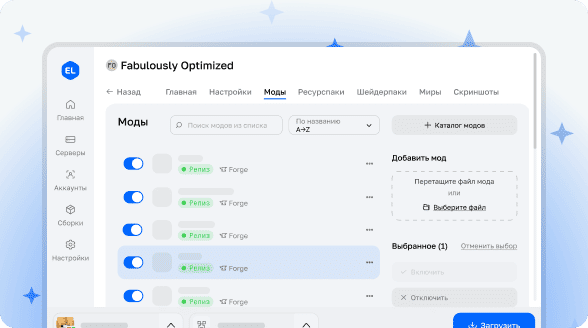

Painted Biomes
Mod Overview
The Painted Biomes mod enables creating biome landscapes in Minecraft using graphic templates. Instead of random biome generation, you can draw their placement on images that are then converted into the game world.
Template Operation Modes
Two main template usage methods are available:
- Single Template - one image that can be positioned in the world using coordinate and alignment settings
- Regional Templates - separate images for each Minecraft region (McRegion/Anvil), theoretically allowing biome coverage of the entire game world
Template Repeating
In single template mode, image repetition is available:
- Repetition can be enabled or disabled in each of the four directions (+x, -x, +z, -z)
- Two repetition modes: repeating the entire image or only the edge pixel's biome
Technical Features
The mod uses a special BiomeProvider wrapper, ensuring compatibility with various dimensions. You can select which dimensions the mod will work in through configuration settings.
Configuration Setup
Configuration files support multiple override levels:
- Main settings file in the config/paintedbiomes/ folder
- Overrides for specific worlds
- Overrides for specific dimensions
Biome Colors
Each biome corresponds to a specific color in the template. You can use standard colors from the Amidst program or set custom values through the configuration file.
Image Requirements
Templates must be saved in PNG format. One image pixel corresponds to one block in the game. Images are placed in appropriate folders for each dimension.
Adding Variability
Starting from version 0.5.0, options for adding randomness are available:
- Random template rotation
- Random image flipping
- Use of alternative templates
Quick Start
To get started:
- Launch the game to generate the configuration file
- Enable the mod in the desired dimensions
- Create a template image
- Place it in the correct folder
- Configure unpainted area handling
For convenience in creating regional templates, the template_regionalizer utility is available, which automatically splits large images into regional parts.


